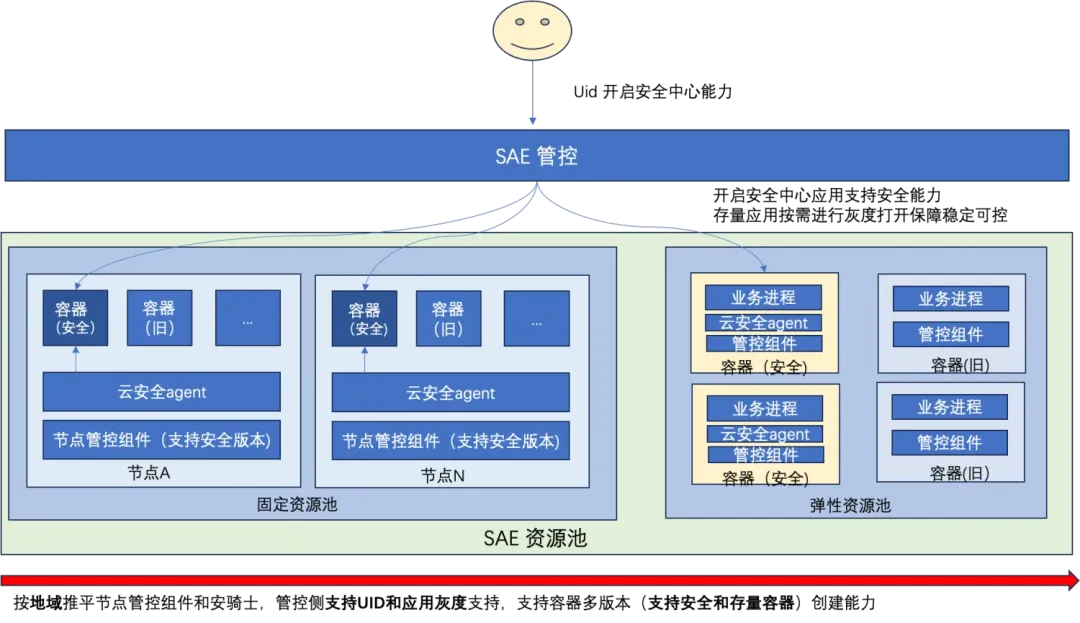一、什么是两级缓存
在项目中。一级缓存用Caffeine,二级缓存用Redis,查询数据时首先查本地的Caffeine缓存,没有命中再通过网络去访问Redis缓存,还是没有命中再查数据库。具体流程如下

二、简单的二级缓存实现-v1
目录结构

2.1 double-cache模块主要文件

pom文件
<?xml version="1.0" encoding="UTF-8"?>
<project xmlns="http://maven.apache.org/POM/4.0.0"
xmlns:xsi="http://www.w3.org/2001/XMLSchema-instance"
xsi:schemaLocation="http://maven.apache.org/POM/4.0.0 http://maven.apache.org/xsd/maven-4.0.0.xsd">
<modelVersion>4.0.0</modelVersion>
<groupId>org.example</groupId>
<artifactId>double-cache</artifactId>
<version>1.0-SNAPSHOT</version>
<parent>
<groupId>org.springframework.boot</groupId>
<artifactId>spring-boot-starter-parent</artifactId>
<version>2.7.2</version>
<relativePath/>
</parent>
<properties>
<maven.compiler.source>8</maven.compiler.source>
<maven.compiler.target>8</maven.compiler.target>
<project.build.sourceEncoding>UTF-8</project.build.sourceEncoding>
</properties>
<dependencies>
<dependency>
<groupId>org.springframework.boot</groupId>
<artifactId>spring-boot-starter-web</artifactId>
</dependency>
<dependency>
<groupId>org.springframework.boot</groupId>
<artifactId>spring-boot-starter-test</artifactId>
</dependency>
<dependency>
<groupId>com.github.ben-manes.caffeine</groupId>
<artifactId>caffeine</artifactId>
<version>2.9.2</version>
</dependency>
<dependency>
<groupId>org.springframework.boot</groupId>
<artifactId>spring-boot-starter-data-redis</artifactId>
</dependency>
</dependencies>
</project>
2.2 测试模块的主要文件

OrderServiceImpl
@Slf4j
@Service
@RequiredArgsConstructor
public class OrderServiceImpl extends ServiceImpl<OrderMapper, Order> implements OrderService {
private final OrderMapper orderMapper;
private final Cache cache;
private final RedisTemplate redisTemplate;
@Override
public Order getOrderById(Long id) {
String key = CacheConstant.ORDER + id;
Order order = (Order) cache.get(key,
k -> {
//先查询 Redis
Object obj = redisTemplate.opsForValue().get(k);
if (Objects.nonNull(obj)) {
log.info("get data from redis");
return obj;
}
// Redis没有则查询 DB
log.info("get data from database");
Order myOrder = orderMapper.selectOne(new LambdaQueryWrapper<Order>()
.eq(Order::getId, id));
redisTemplate.opsForValue().set(k, myOrder, 120, TimeUnit.SECONDS);
return myOrder;
});
return order;
}
@Override
public void updateOrder(Order order) {
log.info("update order data");
String key = CacheConstant.ORDER + order.getId();
orderMapper.updateById(order);
//修改 Redis
redisTemplate.opsForValue().set(key, order, 120, TimeUnit.SECONDS);
// 修改本地缓存
cache.put(key, order);
}
@Override
public void deleteOrder(Long id) {
log.info("delete order");
orderMapper.deleteById(id);
String key = CacheConstant.ORDER + id;
redisTemplate.delete(key);
cache.invalidate(key);
}
}
application.yml
server:
port: 8090
spring:
application:
name: test-demo
datasource:
url: jdbc:mysql://localhost:3306/ktl?useUnicode=true&characterEncoding=UTF-8&serverTimezone=UTC
username: root
password: root
driver-class-name: com.mysql.cj.jdbc.Driver
redis:
host: 192.168.200.131
port: 6379
database: 0
timeout: 10000ms
lettuce:
pool:
max-active: 8
max-wait: -1ms
max-idle: 8
min-idle: 0
password: root
logging:
level:
com.cn.dc: debug
org.springframework: warn
pom文件
<?xml version="1.0" encoding="UTF-8"?>
<project xmlns="http://maven.apache.org/POM/4.0.0"
xmlns:xsi="http://www.w3.org/2001/XMLSchema-instance"
xsi:schemaLocation="http://maven.apache.org/POM/4.0.0 http://maven.apache.org/xsd/maven-4.0.0.xsd">
<modelVersion>4.0.0</modelVersion>
<groupId>org.example</groupId>
<artifactId>testcache</artifactId>
<version>1.0-SNAPSHOT</version>
<parent>
<groupId>org.springframework.boot</groupId>
<artifactId>spring-boot-starter-parent</artifactId>
<version>2.7.2</version>
<relativePath/>
</parent>
<properties>
<maven.compiler.source>8</maven.compiler.source>
<maven.compiler.target>8</maven.compiler.target>
<project.build.sourceEncoding>UTF-8</project.build.sourceEncoding>
<mybatis-plus.version>3.3.2</mybatis-plus.version>
</properties>
<dependencies>
<dependency>
<groupId>org.example</groupId>
<artifactId>double-cache</artifactId>
<version>1.0-SNAPSHOT</version>
</dependency>
<dependency>
<groupId>org.springframework.boot</groupId>
<artifactId>spring-boot-starter-web</artifactId>
</dependency>
<dependency>
<groupId>org.springframework.boot</groupId>
<artifactId>spring-boot-starter-test</artifactId>
</dependency>
<dependency>
<groupId>mysql</groupId>
<artifactId>mysql-connector-java</artifactId>
<scope>runtime</scope>
</dependency>
<dependency>
<groupId>org.apache.commons</groupId>
<artifactId>commons-pool2</artifactId>
<version>2.8.1</version>
</dependency>
<dependency>
<groupId>com.baomidou</groupId>
<artifactId>mybatis-plus-boot-starter</artifactId>
<version>${mybatis-plus.version}</version>
</dependency>
<dependency>
<groupId>org.projectlombok</groupId>
<artifactId>lombok</artifactId>
<version>1.18.12</version>
<scope>provided</scope>
</dependency>
</dependencies>
</project>
2.3 测试
测试get/{id}接口的时候,会把从db查出来的数据放入到redis和Caffeine中,在有效期内不需要再次从数据库查询
三、二级缓存实现-v2
v1的代码入侵性很强,因此加入了注解@Cacheable,@CachePut,@CacheEvict
3.1 double-cache模块

3.2 测试模块
OrderServiceImpl
@Slf4j
@Service
@RequiredArgsConstructor
public class OrderServiceImpl extends ServiceImpl<OrderMapper, Order> implements OrderService {
private final OrderMapper orderMapper;
private final RedisTemplate redisTemplate;
@Override
@Cacheable(value = "order",key = "#id")
//@Cacheable(cacheNames = "order",key = "#p0")
public Order getOrderById(Long id) {
String key= CacheConstant.ORDER + id;
//先查询 Redis
Object obj = redisTemplate.opsForValue().get(key);
if (Objects.nonNull(obj)){
log.info("get data from redis");
return (Order) obj;
}
// Redis没有则查询 DB
log.info("get data from database");
Order myOrder = orderMapper.selectOne(new LambdaQueryWrapper<Order>()
.eq(Order::getId, id));
redisTemplate.opsForValue().set(key,myOrder,120, TimeUnit.SECONDS);
return myOrder;
}
@Override
@CachePut(cacheNames = "order",key = "#order.id")
public Order updateOrder(Order order) {
log.info("update order data");
orderMapper.updateById(order);
//修改 Redis
redisTemplate.opsForValue().set(CacheConstant.ORDER + order.getId(),
order, 120, TimeUnit.SECONDS);
return order;
}
@Override
@CacheEvict(cacheNames = "order",key = "#id")
public void deleteOrder(Long id) {
log.info("delete order");
orderMapper.deleteById(id);
redisTemplate.delete(CacheConstant.ORDER + id);
}
}
四、二级缓存实现-v3-aop结合自定义注解
模仿spring通过注解管理缓存的方式,我们也可以选择自定义注解,然后在切面中处理缓存,从而将对业务代码的入侵降到最低。
首先定义一个注解,用于添加在需要操作缓存的方法上:
@Target(ElementType.METHOD)
@Retention(RetentionPolicy.RUNTIME)
@Documented
public @interface DoubleCache {
String cacheName();
String key(); //支持springEl表达式
long l2TimeOut() default 120;
CacheType type() default CacheType.FULL;
}
我们使用cacheName + key作为缓存的真正key(仅存在一个Cache中,不做CacheName隔离),l2TimeOut为可以设置的二级缓存Redis的过期时间,type是一个枚举类型的变量,表示操作缓存的类型,枚举类型定义如下:
public enum CacheType {
FULL, //存取
PUT, //只存
DELETE //删除
}
因为要使key支持springEl表达式,所以需要写一个方法,使用表达式解析器解析参数:
public class ElParser {
public static String parse(String elString, TreeMap<String,Object> map){
elString=String.format("#{%s}",elString);
//创建表达式解析器
ExpressionParser parser = new SpelExpressionParser();
//通过evaluationContext.setVariable可以在上下文中设定变量。
EvaluationContext context = new StandardEvaluationContext();
map.entrySet().forEach(entry->
context.setVariable(entry.getKey(),entry.getValue())
);
//解析表达式
Expression expression = parser.parseExpression(elString, new TemplateParserContext());
//使用Expression.getValue()获取表达式的值,这里传入了Evaluation上下文
String value = expression.getValue(context, String.class);
return value;
}
}
至于Cache相关参数的配置,我们沿用V1版本中的配置即可。准备工作做完了,下面我们定义切面,在切面中操作Cache来读写Caffeine的缓存,操作RedisTemplate读写Redis缓存。
@Slf4j
@Component
@Aspect
@AllArgsConstructor
public class CacheAspect {
private final Cache cache;
private final RedisTemplate redisTemplate;
private final String COLON = ":";
@Pointcut("@annotation(org.example.doublecache.annotation.DoubleCache)")
public void cacheAspect() {
}
@Around("cacheAspect()")
public Object doAround(ProceedingJoinPoint point) throws Throwable {
MethodSignature signature = (MethodSignature) point.getSignature();
Method method = signature.getMethod();
// if (!method.isAnnotationPresent(DoubleCache.class))
// return null;
//拼接解析springEl表达式的map
String[] paramNames = signature.getParameterNames();
Object[] args = point.getArgs();
TreeMap<String, Object> treeMap = new TreeMap<>();
for (int i = 0; i < paramNames.length; i++) {
treeMap.put(paramNames[i],args[i]);
}
DoubleCache annotation = method.getAnnotation(DoubleCache.class);
String elResult = ElParser.parse(annotation.key(), treeMap);
String realKey = annotation.cacheName() + COLON + elResult;
//强制更新
if (annotation.type()== CacheType.PUT){
Object object = point.proceed();
redisTemplate.opsForValue().set(realKey, object,annotation.l2TimeOut(), TimeUnit.SECONDS);
cache.put(realKey, object);
return object;
}
//删除
else if (annotation.type()== CacheType.DELETE){
redisTemplate.delete(realKey);
cache.invalidate(realKey);
return point.proceed();
}
//读写,查询Caffeine
Object caffeineCache = cache.getIfPresent(realKey);
if (Objects.nonNull(caffeineCache)) {
log.info("get data from caffeine");
return caffeineCache;
}
//查询Redis
Object redisCache = redisTemplate.opsForValue().get(realKey);
if (Objects.nonNull(redisCache)) {
log.info("get data from redis");
cache.put(realKey, redisCache);
return redisCache;
}
log.info("get data from database");
Object object = point.proceed();
if (Objects.nonNull(object)){
//写回Redis
redisTemplate.opsForValue().set(realKey, object,annotation.l2TimeOut(), TimeUnit.SECONDS);
//写入Caffeine
cache.put(realKey, object);
}
return object;
}
}
4.1 double-cache模块

4.2 测试模块

OrderServiceImpl修改如下
@Slf4j
@Service
@RequiredArgsConstructor
public class OrderServiceImpl extends ServiceImpl<OrderMapper, Order> implements OrderService {
private final OrderMapper orderMapper;
@Override
@DoubleCache(cacheName = "order", key = "#id",
type = CacheType.FULL)
public Order getOrderById(Long id) {
Order myOrder = orderMapper.selectOne(new LambdaQueryWrapper<Order>()
.eq(Order::getId, id));
return myOrder;
}
@Override
@DoubleCache(cacheName = "order",key = "#order.id",
type = CacheType.PUT)
public Order updateOrder(Order order) {
orderMapper.updateById(order);
return order;
}
@Override
@DoubleCache(cacheName = "order",key = "#id",
type = CacheType.DELETE)
public void deleteOrder(Long id) {
orderMapper.deleteById(id);
}
@Override
@DoubleCache(cacheName = "order",key = "#id")
public Order getOrderByIdAndStatus(Long id,Integer status) {
Order myOrder = orderMapper.selectOne(new LambdaQueryWrapper<Order>()
.eq(Order::getId, id)
.eq(Order::getStatus,status));
return myOrder;
}
在TestApplication上加@EnableCaching
4.3 测试
从数据库10ms+,生产中会走网络通信会更长。
从Caffeine平均4ms

五、两级缓存-改造版本(符合JSR107规范+保证缓存数据一致性)
上面v3虽然说能够实现功能,但实现手法还是太粗糙了,并且遗留了一些问题没有处理。下面围绕两个方面进行进一步的改造:
-
JSR107定义了缓存使用规范,spring中提供了基于这个规范的接口,所以我们可以直接使用spring中的接口进行Caffeine和Redis两级缓存的整合改造 - 在分布式环境下,如果一台主机的本地缓存进行修改,需要通知其他主机修改本地缓存,解决分布式环境下本地缓存一致性问题
5.1 JSR107规范
文档:JSR107中文版(非官方)
在JSR107缓存规范中定义了5个核心接口,分别是CachingProvider,CacheManager,Cache, Entry和Expiry,参考下面这张图,可以看到除了Entry和Expiry以外,从上到下都是一对多的包含关系。

从上面这张图我们可以看出,一个应用可以创建并管理多个CachingProvider,同样一个CachingProvider也可以管理多个CacheManager,缓存管理器CacheManager中则维护了多个Cache。
Cache是一个类似Map的数据结构,Entry就是其中存储的每一个key-value数据对,并且每个Entry都有一个过期时间Expiry。而我们在使用spring集成第三方的缓存时,只需要实现Cache和CacheManager这两个接口就可以了,下面分别具体来看一下。
| 接口 | 介绍 |
|---|---|
CachingProvider | 缓存提供者。 定义了创建、配置、获取、管理和控制多个 CacheManager。一个应用可以在运行期访问多个 CachingProvider。 |
CacheManager | 缓存管理器。 定义了创建、配置、获取、管理和控制多个唯一命名的 Cache,这些 Cache 存在于 CacheManager 的上下文中。一个 CacheManager 仅被一个 CachingProvider 所拥有。 |
Cache | 缓存组件。 是一个类似 Map 的数据结构并临时存储以 key 为索引的值。一个 Cache 仅被一个 CacheManager 所拥有。 |
Entry | 键值对。 是一个存储在 Cache 中的 key-value 对。 |
Expiry | 有效期。 每一个存储在 Cache 中的条目有一个定义的有效期。一旦超过这个时间,条目为过期的状态。一旦过期,条目将不可访问、更新和删除。缓存有效期可以通过 ExpiryPolicy 设置。 |
5.2 根据JSR107规范改造
5.2.1 Cache
spring中的Cache接口规范了缓存组件的定义,包含了缓存的各种操作,实现具体缓存操作的管理。例如我们熟悉的RedisCache、EhCacheCache等,都实现了这个接口。
在Cache接口中,定义了get、put、evict、clear等方法,分别对应缓存的存入、取出、删除、清空操作。不过我们这里不直接使用Cache接口,AbstractValueAdaptingCache是一个抽象类,它已经实现了Cache接口,是spring在Cache接口的基础上帮助我们进行了一层封装,所以我们直接继承这个类就可以。

继承AbstractValueAdaptingCache抽象类后,除了创建Cache的构造方法外,还需要实现下面的几个方法:
// 在缓存中实际执行查找的操作,父类的get()方法会调用这个方法
protected abstract Object lookup(Object key);
// 通过key获取缓存值,如果没有找到,会调用valueLoader的call()方法
public <T> T get(Object key, Callable<T> valueLoader);
// 将数据放入缓存中
public void put(Object key, Object value);
// 删除缓存
public void evict(Object key);
// 清空缓存中所有数据
public void clear();
// 获取缓存名称,一般在CacheManager创建时指定
String getName();
// 获取实际使用的缓存
Object getNativeCache();
因为要整合RedisTemplate和Caffeine的Cache,所以这些都需要在缓存的构造方法中传入,除此之外构造方法中还需要再传出缓存名称cacheName,以及在配置文件中实际配置的一些缓存参数。先看一下构造方法的实现:
public class DoubleCache extends AbstractValueAdaptingCache {
private String cacheName;
private RedisTemplate<Object, Object> redisTemplate;
private Cache<Object, Object> caffeineCache;
private DoubleCacheConfig doubleCacheConfig;
protected DoubleCache(boolean allowNullValues) {
super(allowNullValues);
}
public DoubleCache(String cacheName,RedisTemplate<Object, Object> redisTemplate,
Cache<Object, Object> caffeineCache,
DoubleCacheConfig doubleCacheConfig){
super(doubleCacheConfig.getAllowNull());
this.cacheName=cacheName;
this.redisTemplate=redisTemplate;
this.caffeineCache=caffeineCache;
this.doubleCacheConfig=doubleCacheConfig;
}
//...
}
抽象父类的构造方法中只有一个boolean类型的参数allowNullValues,表示是否允许缓存对象为null。除此之外,AbstractValueAdaptingCache中还定义了两个包装方法来配合这个参数进行使用,分别是toStoreValue()和fromStoreValue(),特殊用途是用于在缓存null对象时进行包装、以及在获取时进行解析并返回。
我们之后会在CacheManager中调用后面这个自己实现的构造方法,来实例化Cache对象,参数中DoubleCacheConfig是使用@ConfigurationProperties读取的yml配置文件封装的数据对象,会在后面使用。
当一个方法添加了@Cacheable注解时,执行时会先调用父类AbstractValueAdaptingCache中的get(key)方法,它会再调用我们自己实现的lookup方法。在实际执行查找操作的lookup方法中,我们的逻辑仍然是先查找Caffeine、没有找到时再查找Redis:
@Override
protected Object lookup(Object key) {
// 先从caffeine中查找
Object obj = caffeineCache.getIfPresent(key);
if (Objects.nonNull(obj)){
log.info("get data from caffeine");
return obj;
}
//再从redis中查找
String redisKey=this.name+":"+ key;
obj = redisTemplate.opsForValue().get(redisKey);
if (Objects.nonNull(obj)){
log.info("get data from redis");
caffeineCache.put(key,obj);
}
return obj;
}
如果lookup方法的返回结果不为null,那么就会直接返回结果给调用方。如果返回为null时,就会执行原方法,执行完成后调用put方法,将数据放入缓存中。接下来我们实现put方法:
@Override
public void put(Object key, Object value) {
if(!isAllowNullValues() && Objects.isNull(value)){
log.error("the value NULL will not be cached");
return;
}
//使用 toStoreValue(value) 包装,解决caffeine不能存null的问题
caffeineCache.put(key,toStoreValue(value));
// null对象只存在caffeine中一份就够了,不用存redis了
if (Objects.isNull(value))
return;
String redisKey=this.cacheName +":"+ key;
Optional<Long> expireOpt = Optional.ofNullable(doubleCacheConfig)
.map(DoubleCacheConfig::getRedisExpire);
if (expireOpt.isPresent()){
redisTemplate.opsForValue().set(redisKey,toStoreValue(value),
expireOpt.get(), TimeUnit.SECONDS);
}else{
redisTemplate.opsForValue().set(redisKey,toStoreValue(value));
}
}
上面我们对于是否允许缓存空对象进行了判断,能够缓存空对象的好处之一就是可以避免缓存穿透。需要注意的是,Caffeine中是不能直接缓存null的,因此可以使用父类提供的toStoreValue()方法,将它包装成一个NullValue类型。在取出对象时,如果是NullValue,也不用我们自己再去调用fromStoreValue()将这个包装类型还原,父类的get方法中已经帮我们做好了。
另外,上面在put方法中缓存空对象时,只在Caffeine缓存中一份即可,可以不用在Redis中再存一份。
缓存的删除方法evict()和清空方法clear()的实现就比较简单了,直接删除一跳或全部数据即可:
@Override
public void evict(Object key) {
redisTemplate.delete(this.cacheName +":"+ key);
caffeineCache.invalidate(key);
}
@Override
public void clear() {
Set<Object> keys = redisTemplate.keys(this.cacheName.concat(":*"));
for (Object key : keys) {
redisTemplate.delete(String.valueOf(key));
}
caffeineCache.invalidateAll();
}
获取缓存cacheName和实际缓存的方法实现:
@Override
public String getName() {
return this.cacheName;
}
@Override
public Object getNativeCache() {
return this;
}
最后,我们再来看一下带有两个参数的get方法,为什么把这个方法放到最后来说呢,因为如果我们只是使用注解来管理缓存的话,那么这个方法不会被调用到,简单看一下实现:
@Override
public <T> T get(Object key, Callable<T> valueLoader) {
ReentrantLock lock=new ReentrantLock();
try{
lock.lock();//加锁
Object obj = lookup(key);
if (Objects.nonNull(obj)){
return (T)obj;
}
//没有找到
obj = valueLoader.call();
put(key,obj);//放入缓存
return (T)obj;
}catch (Exception e){
log.error(e.getMessage());
}finally {
lock.unlock();
}
return null;
}
方法的实现比较容易理解,还是先调用lookup方法寻找是否已经缓存了对象,如果没有找到那么就调用Callable中的call方法进行获取,并在获取完成后存入到缓存中去。至于这个方法如何使用,具体代码我们放在后面使用这一块再看。
需要注意的是,这个方法的接口注释中强调了需要我们自己来保证方法同步,因此这里使用了ReentrantLock进行了加锁操作。到这里,Cache的实现就完成了。
DoubleCache类文件代码如下:
/**
* 这个是没有加消息的最初版本
**/
import com.github.benmanes.caffeine.cache.Cache;
import lombok.extern.slf4j.Slf4j;
import org.example.doublecache.config.DoubleCacheConfig;
import org.springframework.cache.support.AbstractValueAdaptingCache;
import org.springframework.data.redis.core.RedisTemplate;
import java.util.Objects;
import java.util.Optional;
import java.util.Set;
import java.util.concurrent.Callable;
import java.util.concurrent.TimeUnit;
import java.util.concurrent.locks.ReentrantLock;
@Slf4j
public class DoubleCacheV0 extends AbstractValueAdaptingCache {
private String cacheName;
private RedisTemplate<Object, Object> redisTemplate;
private Cache<Object, Object> caffeineCache;
private DoubleCacheConfig doubleCacheConfig;
protected DoubleCacheV0(boolean allowNullValues) {
super(allowNullValues);
}
public DoubleCacheV0(String cacheName, RedisTemplate<Object, Object> redisTemplate,
Cache<Object, Object> caffeineCache,
DoubleCacheConfig doubleCacheConfig){
super(doubleCacheConfig.getAllowNull());
this.cacheName =cacheName;
this.redisTemplate=redisTemplate;
this.caffeineCache=caffeineCache;
this.doubleCacheConfig=doubleCacheConfig;
}
//使用注解时不走这个方法,实际走父类的get方法
@Override
public <T> T get(Object key, Callable<T> valueLoader) {
ReentrantLock lock=new ReentrantLock();
try{
lock.lock();//加锁
Object obj = lookup(key);
if (Objects.nonNull(obj)){
return (T)obj;
}
//没有找到
obj = valueLoader.call();
//放入缓存
put(key,obj);
return (T)obj;
}catch (Exception e){
log.error(e.getMessage());
}finally {
lock.unlock();
}
return null;
}
@Override
protected Object lookup(Object key) {
// 先从caffeine中查找
Object obj = caffeineCache.getIfPresent(key);
if (Objects.nonNull(obj)){
log.info("get data from caffeine");
return obj; //不用fromStoreValue,否则返回的是null,会再查数据库
}
//再从redis中查找
String redisKey=this.cacheName +":"+ key;
obj = redisTemplate.opsForValue().get(redisKey);
if (Objects.nonNull(obj)){
log.info("get data from redis");
caffeineCache.put(key,obj);
}
return obj;
}
@Override
public void put(Object key, Object value) {
if(!isAllowNullValues() && Objects.isNull(value)){
log.error("the value NULL will not be cached");
return;
}
//使用 toStoreValue(value) 包装,解决caffeine不能存null的问题
//caffeineCache.put(key,value);
caffeineCache.put(key,toStoreValue(value));
// null对象只存在caffeine中一份就够了,不用存redis了
if (Objects.isNull(value))
return;
String redisKey=this.cacheName +":"+ key;
Optional<Long> expireOpt = Optional.ofNullable(doubleCacheConfig)
.map(DoubleCacheConfig::getRedisExpire);
if (expireOpt.isPresent()){
redisTemplate.opsForValue().set(redisKey,toStoreValue(value),
expireOpt.get(), TimeUnit.SECONDS);
}else{
redisTemplate.opsForValue().set(redisKey,toStoreValue(value));
}
}
@Override
public void evict(Object key) {
redisTemplate.delete(this.cacheName +":"+ key);
caffeineCache.invalidate(key);
}
@Override
public void clear() {
//如果是正式环境,避免使用keys命令
Set<Object> keys = redisTemplate.keys(this.cacheName.concat(":*"));
for (Object key : keys) {
redisTemplate.delete(String.valueOf(key));
}
caffeineCache.invalidateAll();
}
@Override
public String getName() {
return this.cacheName;
}
@Override
public Object getNativeCache() {
return this;
}
}
5.2.2 CacheManager
下面我们接着看另一个重要的接口CacheManager。
从名字就可以看出,CacheManager是一个缓存管理器,它可以被用来管理一组Cache。在上一篇文章的v2版本中,我们使用的CaffeineCacheManager就实现了这个接口,除此之外还有RedisCacheManager、EhCacheCacheManager等也都是通过这个接口实现。
下面我们要自定义一个类实现CacheManager接口,管理上面实现的DoubleCache作为spring中的缓存使用。接口中需要实现的方法只有下面两个:
//根据cacheName获取Cache实例,不存在时进行创建
Cache getCache(String name);
//返回管理的所有cacheName
Collection<String> getCacheNames();
在自定义的缓存管理器中,我们要使用ConcurrentHashMap维护一组不同的Cache,再定义一个构造方法,在参数中传入已经在spring中配置好的RedisTemplate,以及相关的缓存配置参数:
public class DoubleCacheManager implements CacheManager {
Map<String, Cache> cacheMap = new ConcurrentHashMap<>();
private RedisTemplate<Object, Object> redisTemplate;
private DoubleCacheConfig dcConfig;
public DoubleCacheManager(RedisTemplate<Object, Object> redisTemplate,
DoubleCacheConfig doubleCacheConfig) {
this.redisTemplate = redisTemplate;
this.dcConfig = doubleCacheConfig;
}
//...
}
然后实现getCache方法,逻辑很简单,先根据name从Map中查找对应的Cache,如果找到则直接返回,这个参数name就是上一篇文章中提到的cacheName,CacheManager根据它实现不同Cache的隔离。
如果没有根据名称找到缓存的话,那么新建一个DoubleCache对象,并放入Map中。这里使用的ConcurrentHashMap的putIfAbsent()方法放入,避免重复创建Cache以及造成Cache内数据的丢失。具体代码如下:
@Override
public Cache getCache(String name) {
Cache cache = cacheMap.get(name);
if (Objects.nonNull(cache)) {
return cache;
}
cache = new DoubleCache(name, redisTemplate, createCaffeineCache(), dcConfig);
Cache oldCache = cacheMap.putIfAbsent(name, cache);
return oldCache == null ? cache : oldCache;
}
在上面创建DoubleCache对象的过程中,需要先创建一个Caffeine的Cache对象作为参数传入,这一过程主要是根据实际项目的配置文件中的具体参数进行初始化,代码如下:
private com.github.benmanes.caffeine.cache.Cache createCaffeineCache(){
Caffeine<Object, Object> caffeineBuilder = Caffeine.newBuilder();
Optional<DoubleCacheConfig> dcConfigOpt = Optional.ofNullable(this.dcConfig);
dcConfigOpt.map(DoubleCacheConfig::getInit)
.ifPresent(init->caffeineBuilder.initialCapacity(init));
dcConfigOpt.map(DoubleCacheConfig::getMax)
.ifPresent(max->caffeineBuilder.maximumSize(max));
dcConfigOpt.map(DoubleCacheConfig::getExpireAfterWrite)
.ifPresent(eaw->caffeineBuilder.expireAfterWrite(eaw,TimeUnit.SECONDS));
dcConfigOpt.map(DoubleCacheConfig::getExpireAfterAccess)
.ifPresent(eaa->caffeineBuilder.expireAfterAccess(eaa,TimeUnit.SECONDS));
dcConfigOpt.map(DoubleCacheConfig::getRefreshAfterWrite)
.ifPresent(raw->caffeineBuilder.refreshAfterWrite(raw,TimeUnit.SECONDS));
return caffeineBuilder.build();
}
getCacheNames方法很简单,直接返回Map的keySet就可以了,代码如下:
@Override
public Collection<String> getCacheNames() {
return cacheMap.keySet();
}
DoubleCacheManager总的代码如下
import org.example.doublecache.config.DoubleCacheConfig;
import com.github.benmanes.caffeine.cache.Caffeine;
import org.springframework.cache.Cache;
import org.springframework.cache.CacheManager;
import org.springframework.data.redis.core.RedisTemplate;
import java.util.*;
import java.util.concurrent.ConcurrentHashMap;
import java.util.concurrent.TimeUnit;
public class DoubleCacheManager implements CacheManager {
Map<String, Cache> cacheMap = new ConcurrentHashMap<>();
private RedisTemplate<Object, Object> redisTemplate;
private DoubleCacheConfig dcConfig;
public DoubleCacheManager(RedisTemplate<Object, Object> redisTemplate,
DoubleCacheConfig doubleCacheConfig) {
this.redisTemplate = redisTemplate;
this.dcConfig = doubleCacheConfig;
}
@Override
public Cache getCache(String name) {
Cache cache = cacheMap.get(name);
if (Objects.nonNull(cache)) {
return cache;
}
cache = new DoubleCacheV0(name, redisTemplate, createCaffeineCache(), dcConfig);
Cache oldCache = cacheMap.putIfAbsent(name, cache);
return oldCache == null ? cache : oldCache;
}
@Override
public Collection<String> getCacheNames() {
return cacheMap.keySet();
}
private com.github.benmanes.caffeine.cache.Cache createCaffeineCache(){
Caffeine<Object, Object> caffeineBuilder = Caffeine.newBuilder();
Optional<DoubleCacheConfig> dcConfigOpt = Optional.ofNullable(this.dcConfig);
dcConfigOpt.map(DoubleCacheConfig::getInit)
.ifPresent(init->caffeineBuilder.initialCapacity(init));
dcConfigOpt.map(DoubleCacheConfig::getMax)
.ifPresent(max->caffeineBuilder.maximumSize(max));
dcConfigOpt.map(DoubleCacheConfig::getExpireAfterWrite)
.ifPresent(eaw->caffeineBuilder.expireAfterWrite(eaw,TimeUnit.SECONDS));
dcConfigOpt.map(DoubleCacheConfig::getExpireAfterAccess)
.ifPresent(eaa->caffeineBuilder.expireAfterAccess(eaa,TimeUnit.SECONDS));
dcConfigOpt.map(DoubleCacheConfig::getRefreshAfterWrite)
.ifPresent(raw->caffeineBuilder.refreshAfterWrite(raw,TimeUnit.SECONDS));
return caffeineBuilder.build();
}
}
5.2.3 配置&使用
@Data
@ConfigurationProperties(prefix = "doublecache")
public class DoubleCacheConfig {
private Boolean allowNull = true;
private Integer init = 100;
private Integer max = 1000;
private Long expireAfterWrite ;
private Long expireAfterAccess;
private Long refreshAfterWrite;
private Long redisExpire;
}
在application.yml文件中配置缓存的参数,代码中使用@ConfigurationProperties接收到DoubleCacheConfig类中:
doublecache:
allowNull: true
init: 128
max: 1024
expireAfterWrite: 30 #Caffeine过期时间
redisExpire: 60 #Redis缓存过期时间
配置自定义的DoubleCacheManager作为默认的缓存管理器:
@Configuration
@EnableConfigurationProperties({DoubleCacheConfig.class})
public class CacheConfig {
@Autowired
DoubleCacheConfig doubleCacheConfig;
@Bean
public DoubleCacheManager cacheManager(RedisTemplate<Object,Object> redisTemplate,
DoubleCacheConfig doubleCacheConfig){
return new DoubleCacheManager(redisTemplate,doubleCacheConfig);
}
}
Service中的代码还是老样子,不需要在代码中手动操作缓存,只要直接在方法上使用@Cache相关注解即可:
@Service @Slf4j
@AllArgsConstructor
public class OrderServiceImpl implements OrderService {
private final OrderMapper orderMapper;
@Cacheable(value = "order",key = "#id")
public Order getOrderById(Long id) {
Order myOrder = orderMapper.selectOne(new LambdaQueryWrapper<Order>()
.eq(Order::getId, id));
return myOrder;
}
@CachePut(cacheNames = "order",key = "#order.id")
public Order updateOrder(Order order) {
orderMapper.updateById(order);
return order;
}
@CacheEvict(cacheNames = "order",key = "#id")
public void deleteOrder(Long id) {
orderMapper.deleteById(id);
}
//没有注解,使用get(key,callable)方法
public Order getOrderById2(Long id) {
DoubleCacheManager cacheManager = SpringContextUtil.getBean(DoubleCacheManager.class);
Cache cache = cacheManager.getCache("order");
Order order =(Order) cache.get(id, (Callable<Object>) () -> {
log.info("get data from database");
Order myOrder = orderMapper.selectOne(new LambdaQueryWrapper<Order>()
.eq(Order::getId, id));
return myOrder;
});
return order;
}
}
5.2.4 测试
ps:只要添加了spring-boot-starter-data-redis依赖,并且application.yml中配置了redis的连接相关的配置,且@EnableCaching,那么使用@Cacheable等注解,spring就会自动使用Redis进行缓存(pojo类需要实现Serializable),并且不需要RestTemplate(就算配置了RestTemplate)也没用。
上面是我项目中测试错误的情况下发现的,原因是spring.factories文件里并没有添加CacheConfig,而且RestTemplate配置的json序列化器没有生效。
- 目录


如果出现java: 方法引用无效 找不到符号类似错误,可能是lombok以来笨笨过低,与idea版本不匹配。
5.3 分布式环境改造-保证缓存数据一致性
在分布式环境下,可能会存在各个主机上一级缓存不一致的问题。当一台主机修改了本地缓存后,其他主机是没有感知的,仍然保持了之前的缓存,那么这种情况下就可能取到脏数据。既然我们在项目中已经使用了Redis,那么就可以使用它的发布/订阅功能来使各个节点的缓存进行同步。
5.3.1 定义消息体
在使用Redis发送消息前,需要先定义一个消息对象。其中的数据包括消息要作用于的Cache名称、操作类型、数据以及发出消息的源主机标识:
@Data
@NoArgsConstructor
@AllArgsConstructor
public class CacheMassage implements Serializable {
private static final long serialVersionUID = -3574997636829868400L;
private String cacheName;
private CacheMsgType type; //标识更新或删除操作
private Object key;
private Object value;
private String msgSource; //源主机标识,用来避免重复操作
}
定义一个枚举来标识消息的类型,是要进行更新还是删除操作:
public enum CacheMsgType {
UPDATE,
DELETE;
}
消息体中的msgSource是添加的一个消息源主机的标识,添加这个是为了避免收到当前主机发送的消息后,再进行重复操作,也就是说收到本机发出的消息直接丢掉什么都不做就可以了。源主机标识这里使用的是主机ip加项目端口的方式,获取方法如下:
public static String getMsgSource() throws UnknownHostException {
String host = InetAddress.getLocalHost().getHostAddress();
Environment env = SpringContextUtil.getBean(Environment.class);
String port = env.getProperty("server.port");
return host+":"+port;
}
这样消息体的定义就完成了,之后只要调用redisTemplate的convertAndSend方法就可以把这个对象发布到指定的主题上了。
5.3.2 Redis消息配置
要使用Redis的消息监听功能,需要配置两项内容:
MessageListenerAdapter:消息监听适配器,可以在其中指定自定义的监听代理类,并且可以自定义使用哪个方法处理监听逻辑RedisMessageListenerContainer: 一个可以为消息监听器提供异步行为的容器,并且提供消息转换和分派等底层功能
@Configuration
public class MessageConfig {
public static final String TOPIC="cache.msg";
@Bean
RedisMessageListenerContainer container(MessageListenerAdapter listenerAdapter,
RedisConnectionFactory redisConnectionFactory){
RedisMessageListenerContainer container = new RedisMessageListenerContainer();
container.setConnectionFactory(redisConnectionFactory);
container.addMessageListener(listenerAdapter, new PatternTopic(TOPIC));
return container;
}
@Bean
MessageListenerAdapter adapter(RedisMessageReceiver receiver){
return new MessageListenerAdapter(receiver,"receive");
}
}
在上面的监听适配器MessageListenerAdapter中,我们传入了一个自定义的RedisMessageReceiver接收并处理消息,并指定使用它的receive方法来处理监听到的消息,下面我们就来看看它如何接收消息并消费。
5.3.3 消息消费逻辑
定义一个类RedisMessageReceiver来接收并消费消息,需要在它的方法中实现以下功能:
- 反序列化接收到的消息,转换为前面定义的
CacheMassage类型对象 - 根据消息的主机标识判断这条消息是不是本机发出的,如果是那么直接丢弃,只有接收到其他主机发出的消息才进行处理
- 使用
cacheName得到具体使用的那一个DoubleCache实例 - 根据消息的类型判断要执行的是更新还是删除操作,调用对应的方法
@Slf4j @Component
@AllArgsConstructor
public class RedisMessageReceiver {
private final RedisTemplate redisTemplate;
private final DoubleCacheManager manager;
//接收通知,进行处理
public void receive(String message) throws UnknownHostException {
CacheMassage msg = (CacheMassage) redisTemplate
.getValueSerializer().deserialize(message.getBytes());
log.info(msg.toString());
//如果是本机发出的消息,那么不进行处理
if (msg.getMsgSource().equals(MessageSourceUtil.getMsgSource())){
log.info("收到本机发出的消息,不做处理");
return;
}
DoubleCache cache = (DoubleCache) manager.getCache(msg.getCacheName());
if (msg.getType()== CacheMsgType.UPDATE) {
cache.updateL1Cache(msg.getKey(),msg.getValue());
log.info("更新本地缓存");
}
if (msg.getType()== CacheMsgType.DELETE) {
log.info("删除本地缓存");
cache.evictL1Cache(msg.getKey());
}
}
}
在上面的代码中,调用了DoubleCache中更新一级缓存方法updateL1Cache、删除一级缓存方法evictL1Cache,我们会后面在DoubleCache中进行添加。
5.3.4 修改DoubleCache
在DoubleCache中先添加上面提到的两个方法,由CacheManager获取到具体缓存后调用,进行一级缓存的更新或删除操作:
// 更新一级缓存
public void updateL1Cache(Object key,Object value){
caffeineCache.put(key,value);
}
// 删除一级缓存
public void evictL1Cache(Object key){
caffeineCache.invalidate(key);
}
好了,需要修改的都修改完了,那么我们要在什么场合发送消息呢?答案是在DoubleCache中存入缓存的put方法和移除缓存的evict方法中。首先修改put方法,方法中前面的逻辑不变,在最后添加发送消息通知其他节点更新一级缓存的逻辑:
public void put(Object key, Object value) {
// 省略前面的不变代码...
//发送信息通知其他节点更新一级缓存
CacheMassage cacheMassage
= new CacheMassage(this.cacheName, CacheMsgType.UPDATE,
key,value, MessageSourceUtil.getMsgSource());
redisTemplate.convertAndSend(MessageConfig.TOPIC,cacheMassage);
}
然后修改evict方法,同样保持前面的逻辑不变,在最后添加发送消息的代码:
public void evict(Object key) {
// 省略前面的不变代码...
//发送信息通知其他节点删除一级缓存
CacheMassage cacheMassage
= new CacheMassage(this.cacheName, CacheMsgType.DELETE,
key,null, MessageSourceUtil.getMsgSource());
redisTemplate.convertAndSend(MessageConfig.TOPIC,cacheMassage);
}
适配分布式环境的改造工作到此结束,最终版如下。
六、最终版代码-v4.release
6.1 double-cache模块
目录

6.2 代码
DoubleCache
import com.github.benmanes.caffeine.cache.Cache;
import lombok.extern.slf4j.Slf4j;
import org.example.doublecache.config.DoubleCacheConfig;
import org.example.doublecache.config.MessageConfig;
import org.example.doublecache.msg.CacheMassage;
import org.example.doublecache.msg.CacheMsgType;
import org.example.doublecache.msg.MessageSourceUtil;
import org.springframework.cache.support.AbstractValueAdaptingCache;
import org.springframework.data.redis.core.RedisTemplate;
import java.net.UnknownHostException;
import java.util.Objects;
import java.util.Optional;
import java.util.Set;
import java.util.concurrent.Callable;
import java.util.concurrent.TimeUnit;
import java.util.concurrent.locks.ReentrantLock;
@Slf4j
public class DoubleCache extends AbstractValueAdaptingCache {
private String cacheName;
private RedisTemplate<Object, Object> redisTemplate;
private Cache<Object, Object> caffeineCache;
private DoubleCacheConfig doubleCacheConfig;
protected DoubleCache(boolean allowNullValues) {
super(allowNullValues);
}
public DoubleCache(String cacheName, RedisTemplate<Object, Object> redisTemplate,
Cache<Object, Object> caffeineCache,
DoubleCacheConfig doubleCacheConfig) {
super(doubleCacheConfig.getAllowNull());
this.cacheName = cacheName;
this.redisTemplate = redisTemplate;
this.caffeineCache = caffeineCache;
this.doubleCacheConfig = doubleCacheConfig;
}
//使用注解时不走这个方法,实际走父类的get方法
@Override
public <T> T get(Object key, Callable<T> valueLoader) {
ReentrantLock lock = new ReentrantLock();
try {
lock.lock();//加锁
Object obj = lookup(key);
if (Objects.nonNull(obj)) {
return (T) obj;
}
//没有找到
obj = valueLoader.call();
//放入缓存
put(key, obj);
return (T) obj;
} catch (Exception e) {
log.error(e.getMessage());
} finally {
lock.unlock();
}
return null;
}
@Override
protected Object lookup(Object key) {
// 先从caffeine中查找
Object obj = caffeineCache.getIfPresent(key);
if (Objects.nonNull(obj)) {
log.info("get data from caffeine");
return obj; //不用fromStoreValue,否则返回的是null,会再查数据库
}
//再从redis中查找
String redisKey = this.cacheName + ":" + key;
obj = redisTemplate.opsForValue().get(redisKey);
if (Objects.nonNull(obj)) {
log.info("get data from redis");
caffeineCache.put(key, obj);
}
return obj;
}
@Override
public void put(Object key, Object value) {
if (!isAllowNullValues() && Objects.isNull(value)) {
log.error("the value NULL will not be cached");
return;
}
//使用 toStoreValue(value) 包装,解决caffeine不能存null的问题
//caffeineCache.put(key,value);
caffeineCache.put(key, toStoreValue(value));
// null对象只存在caffeine中一份就够了,不用存redis了
if (Objects.isNull(value))
return;
String redisKey = this.cacheName + ":" + key;
Optional<Long> expireOpt = Optional.ofNullable(doubleCacheConfig)
.map(DoubleCacheConfig::getRedisExpire);
if (expireOpt.isPresent()) {
redisTemplate.opsForValue().set(redisKey, toStoreValue(value),
expireOpt.get(), TimeUnit.SECONDS);
} else {
redisTemplate.opsForValue().set(redisKey, toStoreValue(value));
}
//发送信息通知其他节点更新一级缓存
//同样,空对象不会给其他节点发送信息
try {
CacheMessage cacheMessage
= new CacheMessage(this.cacheName, CacheMsgType.UPDATE,
key, value, MessageSourceUtil.getMsgSource());
redisTemplate.convertAndSend(MessageConfig.TOPIC, cacheMassage);
} catch (UnknownHostException e) {
log.error(e.getMessage());
}
}
@Override
public void evict(Object key) {
redisTemplate.delete(this.cacheName + ":" + key);
caffeineCache.invalidate(key);
//发送信息通知其他节点删除一级缓存
try {
CacheMessage cacheMessage
= new CacheMessage(this.cacheName, CacheMsgType.DELETE,
key, null, MessageSourceUtil.getMsgSource());
redisTemplate.convertAndSend(MessageConfig.TOPIC, cacheMassage);
} catch (UnknownHostException e) {
log.error(e.getMessage());
}
}
@Override
public void clear() {
//如果是正式环境,避免使用keys命令
Set<Object> keys = redisTemplate.keys(this.cacheName.concat(":*"));
for (Object key : keys) {
redisTemplate.delete(String.valueOf(key));
}
caffeineCache.invalidateAll();
}
@Override
public String getName() {
return this.cacheName;
}
@Override
public Object getNativeCache() {
return this;
}
// 更新一级缓存
public void updateL1Cache(Object key, Object value) {
caffeineCache.put(key, value);
}
// 删除一级缓存
public void evictL1Cache(Object key) {
caffeineCache.invalidate(key);
}
}
DoubleCacheManager
import org.example.doublecache.config.DoubleCacheConfig;
import com.github.benmanes.caffeine.cache.Caffeine;
import org.springframework.cache.Cache;
import org.springframework.cache.CacheManager;
import org.springframework.data.redis.core.RedisTemplate;
import java.util.*;
import java.util.concurrent.ConcurrentHashMap;
import java.util.concurrent.TimeUnit;
public class DoubleCacheManager implements CacheManager {
Map<String, Cache> cacheMap = new ConcurrentHashMap<>();
private RedisTemplate<Object, Object> redisTemplate;
private DoubleCacheConfig dcConfig;
public DoubleCacheManager(RedisTemplate<Object, Object> redisTemplate,
DoubleCacheConfig doubleCacheConfig) {
this.redisTemplate = redisTemplate;
this.dcConfig = doubleCacheConfig;
}
@Override
public Cache getCache(String name) {
Cache cache = cacheMap.get(name);
if (Objects.nonNull(cache)) {
return cache;
}
cache = new DoubleCache(name, redisTemplate, createCaffeineCache(), dcConfig);
Cache oldCache = cacheMap.putIfAbsent(name, cache);
return oldCache == null ? cache : oldCache;
}
@Override
public Collection<String> getCacheNames() {
return cacheMap.keySet();
}
private com.github.benmanes.caffeine.cache.Cache createCaffeineCache(){
Caffeine<Object, Object> caffeineBuilder = Caffeine.newBuilder();
Optional<DoubleCacheConfig> dcConfigOpt = Optional.ofNullable(this.dcConfig);
dcConfigOpt.map(DoubleCacheConfig::getInit)
.ifPresent(init->caffeineBuilder.initialCapacity(init));
dcConfigOpt.map(DoubleCacheConfig::getMax)
.ifPresent(max->caffeineBuilder.maximumSize(max));
dcConfigOpt.map(DoubleCacheConfig::getExpireAfterWrite)
.ifPresent(eaw->caffeineBuilder.expireAfterWrite(eaw,TimeUnit.SECONDS));
dcConfigOpt.map(DoubleCacheConfig::getExpireAfterAccess)
.ifPresent(eaa->caffeineBuilder.expireAfterAccess(eaa,TimeUnit.SECONDS));
dcConfigOpt.map(DoubleCacheConfig::getRefreshAfterWrite)
.ifPresent(raw->caffeineBuilder.refreshAfterWrite(raw,TimeUnit.SECONDS));
return caffeineBuilder.build();
}
}
CacheConfig 把@EnableCaching注解移动到这里来了
import org.example.doublecache.cache.DoubleCacheManager;
import org.springframework.beans.factory.annotation.Autowired;
import org.springframework.boot.context.properties.EnableConfigurationProperties;
import org.springframework.context.annotation.Bean;
import org.springframework.context.annotation.Configuration;
import org.springframework.data.redis.core.RedisTemplate;
@Configuration
@EnableCaching
@EnableConfigurationProperties({DoubleCacheConfig.class})
public class CacheConfig {
@Autowired
DoubleCacheConfig doubleCacheConfig;
@Bean
public DoubleCacheManager cacheManager(RedisTemplate<Object,Object> redisTemplate,
DoubleCacheConfig doubleCacheConfig){
return new DoubleCacheManager(redisTemplate,doubleCacheConfig);
}
}
DoubleCacheConfig
import lombok.Data;
import org.springframework.boot.context.properties.ConfigurationProperties;
@Data
@ConfigurationProperties(prefix = "doublecache")
public class DoubleCacheConfig {
private Boolean allowNull = true;
private Integer init = 100;
private Integer max = 1000;
private Long expireAfterWrite ;
private Long expireAfterAccess;
private Long refreshAfterWrite;
private Long redisExpire;
}
MessageConfig
import org.example.doublecache.msg.RedisMessageReceiver;
import org.example.doublecache.util.SpringContextUtil;
import org.springframework.context.annotation.Bean;
import org.springframework.context.annotation.Configuration;
import org.springframework.context.annotation.Import;
import org.springframework.data.redis.connection.RedisConnectionFactory;
import org.springframework.data.redis.listener.PatternTopic;
import org.springframework.data.redis.listener.RedisMessageListenerContainer;
import org.springframework.data.redis.listener.adapter.MessageListenerAdapter;
@Configuration
@Import({RedisMessageReceiver.class, SpringContextUtil.class})
public class MessageConfig {
public static final String TOPIC="cache.msg";
@Bean
RedisMessageListenerContainer container(MessageListenerAdapter listenerAdapter,
RedisConnectionFactory redisConnectionFactory){
RedisMessageListenerContainer container = new RedisMessageListenerContainer();
container.setConnectionFactory(redisConnectionFactory);
container.addMessageListener(listenerAdapter, new PatternTopic(TOPIC));
return container;
}
@Bean
MessageListenerAdapter adapter(RedisMessageReceiver receiver){
return new MessageListenerAdapter(receiver,"receive");
}
}
RedisConfig
import com.fasterxml.jackson.annotation.JsonAutoDetect;
import com.fasterxml.jackson.annotation.JsonTypeInfo;
import com.fasterxml.jackson.annotation.PropertyAccessor;
import com.fasterxml.jackson.databind.ObjectMapper;
import org.springframework.cache.annotation.CachingConfigurerSupport;
import org.springframework.context.annotation.Bean;
import org.springframework.context.annotation.Configuration;
import org.springframework.data.redis.connection.RedisConnectionFactory;
import org.springframework.data.redis.core.RedisTemplate;
import org.springframework.data.redis.serializer.Jackson2JsonRedisSerializer;
import org.springframework.data.redis.serializer.RedisSerializer;
import org.springframework.data.redis.serializer.StringRedisSerializer;
@Configuration
public class RedisConfig extends CachingConfigurerSupport {
@Bean
public RedisTemplate redisTemplate(RedisConnectionFactory redisConnectionFactory){
RedisTemplate<Object, Object> redisTemplate=new RedisTemplate<>();
redisTemplate.setConnectionFactory(redisConnectionFactory);
// json序列化设置
Jackson2JsonRedisSerializer<Object> jackson2JsonRedisSerializer
= new Jackson2JsonRedisSerializer<>(Object.class);
ObjectMapper om = new ObjectMapper();
om.setVisibility(PropertyAccessor.ALL, JsonAutoDetect.Visibility.ANY);
om.activateDefaultTyping(om.getPolymorphicTypeValidator(),
ObjectMapper.DefaultTyping.NON_FINAL,//类名序列化到json串中
JsonTypeInfo.As.WRAPPER_ARRAY);
jackson2JsonRedisSerializer.setObjectMapper(om);
//String类型的序列化
RedisSerializer<?> stringSerializer = new StringRedisSerializer();
redisTemplate.setKeySerializer(stringSerializer);// key采用String序列化方式
redisTemplate.setValueSerializer(jackson2JsonRedisSerializer);// value序列化
redisTemplate.setHashKeySerializer(stringSerializer);// Hash key采用String序列化方式
redisTemplate.setHashValueSerializer(jackson2JsonRedisSerializer);// Hash value序列化
redisTemplate.afterPropertiesSet();
return redisTemplate;
}
}
CacheMassage
import lombok.AllArgsConstructor;
import lombok.Data;
import lombok.NoArgsConstructor;
import java.io.Serializable;
@Data
@NoArgsConstructor
@AllArgsConstructor
public class CacheMessage implements Serializable {
private static final long serialVersionUID = -3574997636829868400L;
private String cacheName;
private CacheMsgType type; //标识更新或删除操作
private Object key;
private Object value;
private String msgSource; //源主机标识,用来避免重复操作
}
CacheMsgType
public enum CacheMsgType {
UPDATE,
DELETE;
}
MessageSourceUtil
import org.springframework.core.env.Environment;
import java.net.InetAddress;
import java.net.UnknownHostException;
public class MessageSourceUtil {
public static String getMsgSource() throws UnknownHostException {
String host = InetAddress.getLocalHost().getHostAddress();
Environment env = SpringContextUtil.getBean(Environment.class);
String port = env.getProperty("server.port");
return host+":"+port;
}
}
RedisMessageReceiver
import lombok.AllArgsConstructor;
import lombok.extern.slf4j.Slf4j;
import org.example.doublecache.cache.DoubleCache;
import org.example.doublecache.cache.DoubleCacheManager;
import org.springframework.data.redis.core.RedisTemplate;
import org.springframework.stereotype.Component;
import java.net.UnknownHostException;
@Slf4j
@Component
@AllArgsConstructor
public class RedisMessageReceiver {
private final RedisTemplate redisTemplate;
private final DoubleCacheManager manager;
//接收通知,进行处理
public void receive(String message) throws UnknownHostException {
CacheMessage msg = (CacheMessage) redisTemplate
.getValueSerializer().deserialize(message.getBytes());
log.info(msg.toString());
//如果是本机发出的消息,那么不进行处理
if (msg.getMsgSource().equals(MessageSourceUtil.getMsgSource())){
log.info("收到本机发出的消息,不做处理");
return;
}
DoubleCache cache = (DoubleCache) manager.getCache(msg.getCacheName());
if (msg.getType()== CacheMsgType.UPDATE) {
cache.updateL1Cache(msg.getKey(),msg.getValue());
log.info("更新本地缓存");
}
if (msg.getType()== CacheMsgType.DELETE) {
log.info("删除本地缓存");
cache.evictL1Cache(msg.getKey());
}
}
}
SpringContextUtil
import org.springframework.beans.BeansException;
import org.springframework.context.ApplicationContext;
import org.springframework.context.ApplicationContextAware;
import org.springframework.stereotype.Component;
@Component
public class SpringContextUtil implements ApplicationContextAware {
private static ApplicationContext applicationContext;
@Override
public void setApplicationContext(ApplicationContext applicationContext) throws BeansException {
this.applicationContext = applicationContext;
}
public static ApplicationContext getApplicationContext() {
return applicationContext;
}
public static Object getBean(String name) {
return applicationContext.getBean(name);
}
public static <T> T getBean(Class<T> t) {
return applicationContext.getBean(t);
}
}
spring.factories
org.springframework.boot.autoconfigure.EnableAutoConfiguration = \
org.example.doublecache.config.RedisConfig, \
org.example.doublecache.config.CacheConfig, \
org.example.doublecache.config.MessageConfig
pom.xml
<?xml version="1.0" encoding="UTF-8"?>
<project xmlns="http://maven.apache.org/POM/4.0.0"
xmlns:xsi="http://www.w3.org/2001/XMLSchema-instance"
xsi:schemaLocation="http://maven.apache.org/POM/4.0.0 http://maven.apache.org/xsd/maven-4.0.0.xsd">
<modelVersion>4.0.0</modelVersion>
<groupId>org.example</groupId>
<artifactId>double-cache</artifactId>
<version>1.0-SNAPSHOT</version>
<parent>
<groupId>org.springframework.boot</groupId>
<artifactId>spring-boot-starter-parent</artifactId>
<version>2.7.2</version>
<relativePath/>
</parent>
<properties>
<maven.compiler.source>8</maven.compiler.source>
<maven.compiler.target>8</maven.compiler.target>
<project.build.sourceEncoding>UTF-8</project.build.sourceEncoding>
</properties>
<dependencies>
<dependency>
<groupId>org.springframework.boot</groupId>
<artifactId>spring-boot-starter-web</artifactId>
</dependency>
<dependency>
<groupId>org.springframework.boot</groupId>
<artifactId>spring-boot-starter-test</artifactId>
</dependency>
<dependency>
<groupId>com.github.ben-manes.caffeine</groupId>
<artifactId>caffeine</artifactId>
<version>2.9.2</version>
</dependency>
<dependency>
<groupId>org.springframework.boot</groupId>
<artifactId>spring-boot-starter-data-redis</artifactId>
</dependency>
<dependency>
<groupId>org.projectlombok</groupId>
<artifactId>lombok</artifactId>
<version>1.18.16</version>
<scope>provided</scope>
</dependency>
</dependencies>
</project>
6.3 测试模块主要代码
pom.xml
<?xml version="1.0" encoding="UTF-8"?>
<project xmlns="http://maven.apache.org/POM/4.0.0"
xmlns:xsi="http://www.w3.org/2001/XMLSchema-instance"
xsi:schemaLocation="http://maven.apache.org/POM/4.0.0 http://maven.apache.org/xsd/maven-4.0.0.xsd">
<modelVersion>4.0.0</modelVersion>
<groupId>org.example</groupId>
<artifactId>testcache</artifactId>
<version>1.0-SNAPSHOT</version>
<parent>
<groupId>org.springframework.boot</groupId>
<artifactId>spring-boot-starter-parent</artifactId>
<version>2.7.2</version>
<relativePath/>
</parent>
<properties>
<maven.compiler.source>8</maven.compiler.source>
<maven.compiler.target>8</maven.compiler.target>
<project.build.sourceEncoding>UTF-8</project.build.sourceEncoding>
<mybatis-plus.version>3.3.2</mybatis-plus.version>
</properties>
<dependencies>
<dependency>
<groupId>org.example</groupId>
<artifactId>double-cache</artifactId>
<version>1.0-SNAPSHOT</version>
</dependency>
<dependency>
<groupId>org.springframework.boot</groupId>
<artifactId>spring-boot-starter-web</artifactId>
</dependency>
<dependency>
<groupId>org.springframework.boot</groupId>
<artifactId>spring-boot-starter-test</artifactId>
</dependency>
<dependency>
<groupId>mysql</groupId>
<artifactId>mysql-connector-java</artifactId>
<scope>runtime</scope>
</dependency>
<dependency>
<groupId>com.baomidou</groupId>
<artifactId>mybatis-plus-boot-starter</artifactId>
<version>${mybatis-plus.version}</version>
</dependency>
<dependency>
<groupId>org.projectlombok</groupId>
<artifactId>lombok</artifactId>
<version>1.18.16</version>
<scope>provided</scope>
</dependency>
</dependencies>
</project>
application.yml
server:
port: 8090
spring:
application:
name: test-demo
datasource:
url: jdbc:mysql://localhost:3306/ktl?useUnicode=true&characterEncoding=UTF-8&serverTimezone=UTC
username: root
password: root
driver-class-name: com.mysql.cj.jdbc.Driver
hikari:
minimum-idle: 5
connection-test-query: SELECT 1 FROM DUAL
maximum-pool-size: 20
auto-commit: true
idle-timeout: 30000
pool-name: MyHikariCP
max-lifetime: 60000
connection-timeout: 30000
redis:
host: 192.168.200.131
port: 6379
database: 0
timeout: 10000ms
lettuce:
pool:
max-active: 8
max-wait: -1ms
max-idle: 8
min-idle: 0
password: root
doublecache:
allowNull: true
init: 128 #Caffeine初始容量
max: 1024 #Caffeine最大容量
expireAfterWrite: 30 #Caffeine过期时间
redisExpire: 60 #Redis缓存过期时间
OrderServiceImpl
@Service @Slf4j
@AllArgsConstructor
public class OrderServiceImpl extends ServiceImpl<OrderMapper,Order> implements OrderService{
private final OrderMapper orderMapper;
@Cacheable(value = "order",key = "#id")
public Order getOrderById(Long id) {
Order myOrder = orderMapper.selectOne(new LambdaQueryWrapper<Order>()
.eq(Order::getId, id));
return myOrder;
}
@CachePut(cacheNames = "order",key = "#order.id")
public Order updateOrder(Order order) {
orderMapper.updateById(order);
return order;
}
@CacheEvict(cacheNames = "order",key = "#id")
public void deleteOrder(Long id) {
orderMapper.deleteById(id);
}
//没有注解,使用get(key,callable)方法
public Order getOrderById2(Long id) {
// DoubleCacheManager cacheManager = SpringContextUtil.getBean(DoubleCacheManager.class);
// Cache cache = cacheManager.getCache("order");
// Order order =(Order) cache.get(id, (Callable<Object>) () -> {
// log.info("get data from database");
// Order myOrder = orderMapper.selectOne(new LambdaQueryWrapper<Order>()
// .eq(Order::getId, id));
// return myOrder;
// });
return null;
}
}
6.4 测试结果
CacheMessage中端口都是8090,是因为实际占用的端口是8090.
发现CacheMessage写成Massage了,自己改一下
启动3个测试模块的服务(端口分别为8090,8091,8092),在配置里VM Options 修改 -Dserver.port=8091。
发送请求:http://127.0.0.1:8090/get/2

在30秒内发送请求http://127.0.0.1:8091/get/2,发现8091端口的应用本地也有缓存。

测试update,在30秒内发送请求127.0.0.1:8092/update
{
"id": 2,
"orderNumber": "10002",
"money": 99.0,
"status": 1
}

其它两个服务都打印出了“更新本地缓存”的日志
测试delete,发送请求127.0.0.1:8090/del?id=2
发现8091端口如下

通过8090get

到此,OK


















![洛谷 P3065 [USACO12DEC] First! G](https://i-blog.csdnimg.cn/direct/5d9cbd9eca6a4aa2a99d2df6c0df82e3.png)

